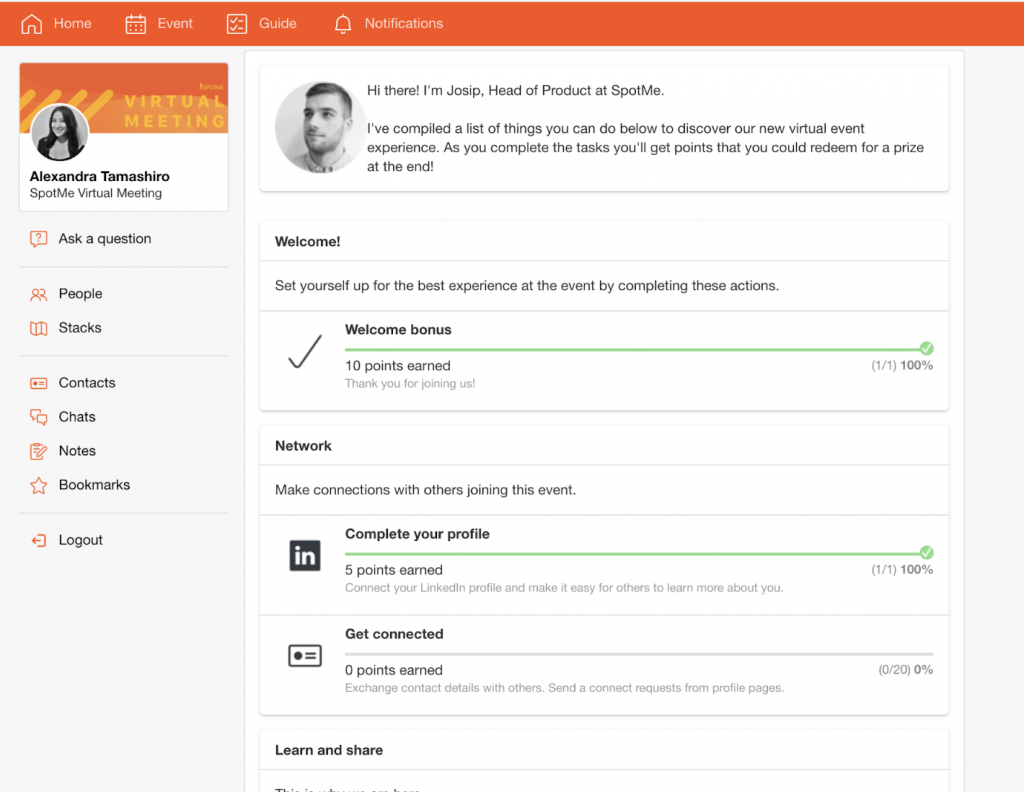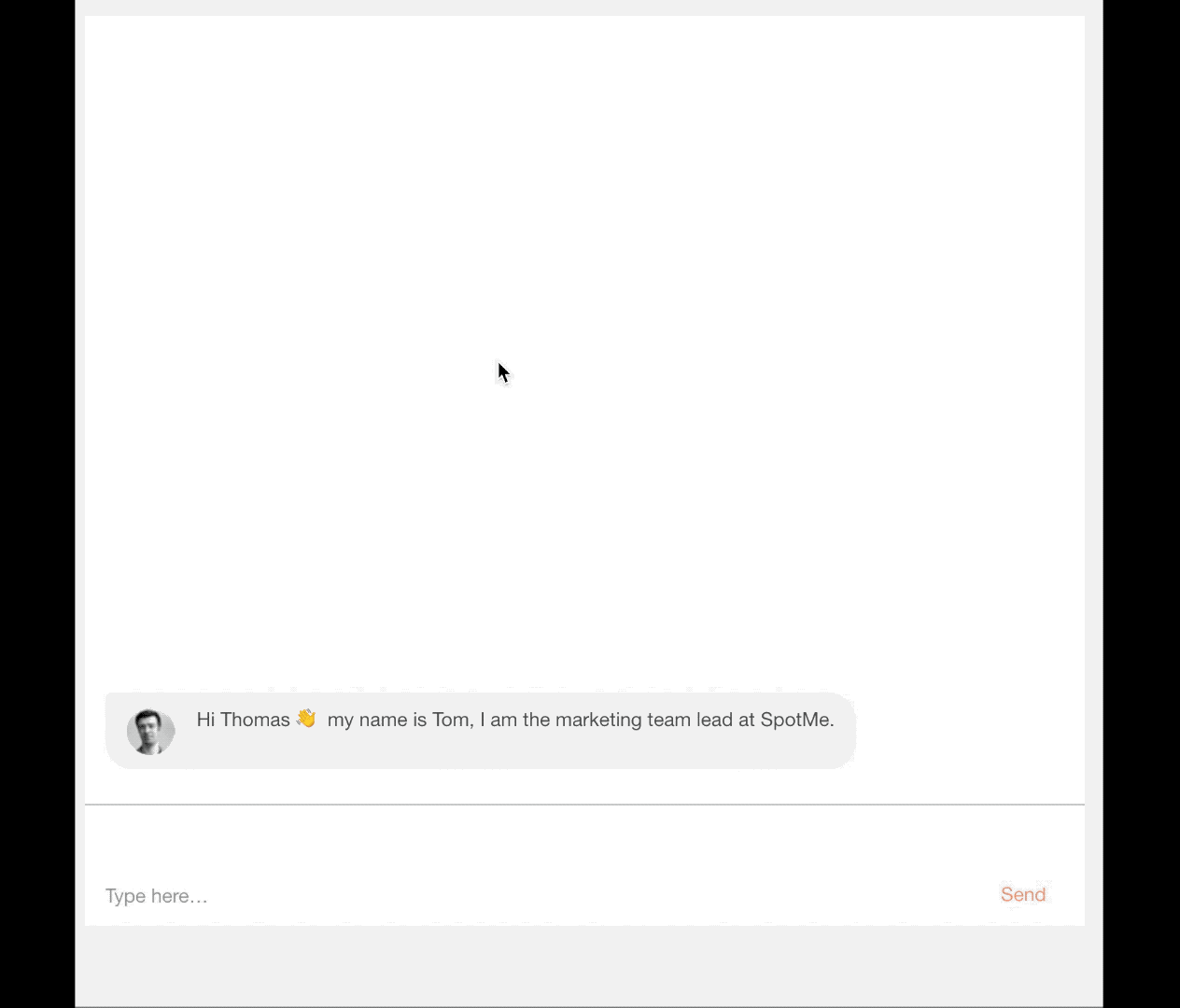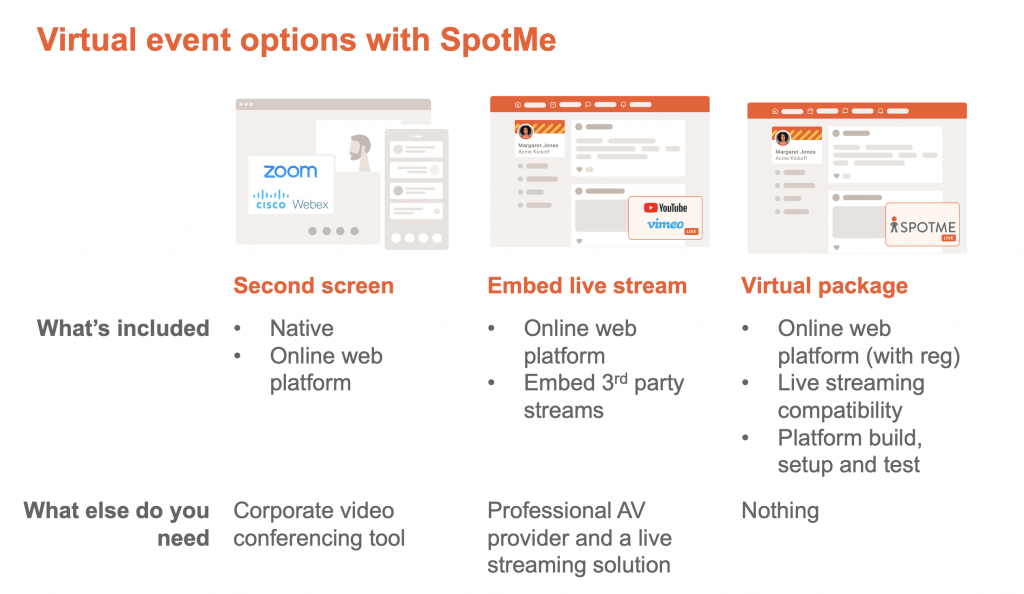
Virtual event experiences and virtual event platforms are hot topics right now, and for good reason. The reality of the COVID-19 outbreak is that it will last months, some scenarios have an impact on travel of speakers and audiences lasting until September, and others until November1.
So, can a brand or company really go 6-9-12 months without some kind of event?
Assuming the answer is no, you probably have two questions:
- How do I change my in-person event into a virtual event experience?
- What technology should I use?
The good news is, that if you get your pivot right, the impact can be big. Those brands that are pivot “winners” see an average 205% increase in social media followers for their pivoted digital events in 2020 vs. the same in-person events in 2019.
Read our research from 20 global brand events: should you pivot or not.
So, how do you change your in-person event into a virtual event experience?
The first thing to note is that you are not alone in asking this question. One estimate we recently heard was that around 66% of event and meeting planners have never hosted a virtual webinar2.
With this statistic in mind, we created these 4 recommendations:
#1 – Build a connected and virtual appropriate agenda
With an in-person event/meeting, you take the audience out of their day-to-day reality and put them in a dedicated space. With virtual events, especially in these times, this is not the case.
For many of your audience, working from home for prolonged periods is probably a new reality. Plus, most are doing so with other members of their household, including roommates, children, etc. So the potential distractions are infinite and inevitable.
One way to combat this is to think about how much time, realistically, you can grab the attention of your audience. And for this exercise, it is useful to look at the webinar (the only time we should use webinars as a benchmark). What we find is that the most popular webinars last for 60 minutes3.
TIP: Remember to take into account the different time zones of your audience
So when it comes to thinking about our virtual agenda, it makes sense to think in bite-sized chunks, that are both accessible and digestible to your audience. This means smaller sections of content, over a longer period of time.
But how do you keep people interested over a longer period? Quite simply you need to give them a reason to attend in the first place, and then a reason to keep coming back for more.
One way to solve this problem is to leverage challenges (a.k.a gamification). Leveraging this kind of interactivity gives you several options, including asking people which topics they want to hear about (could drive feed Q&A activity), give networking a head start by asking people to connect pre-event, drive people to specific content after the event, and give people mini-challenges and assignments with feedback or answers given in the next session.
Get our top advice for boosting attendance and participation.

#2 – Remember the new psychology of your audience
In times of crisis, like the COVID-19 outbreak, you need to remember that the psychology of your audience is changed. For example, the normal attention span is on average 20 minutes, but during a crisis, this is reduced to 12 minutes and further people can only remember three key points4.
What does all this mean? Well, quite simply, it is vital that your content is clear and concise.
Read the 3 keys to preparing your speakers
#3 – Make it easier for your planning team
It is not just your audience that is impacted in a crisis, it is also your team and colleagues. What this means is that the attention, focus and quite honestly propensity for learning new things is dramatically reduced.
One way to make the pivot to virtual is to leverage technology that is already familiar. This reduces the additional strain of having to learn new technologies as well as thinking differently about virtual.
BONUS: Technology already in your stack has likely already gone through your internal technology review, privacy and data processes
#4 – Funnel your audience into an outcome
With in-person events, you might have dedicated spaces for learning more, experiencing new things first-hand, etc. With virtual events, you need to make these opportunities happen.
One way to do that is to deploy conversational elements in your virtual experience. Not only do conversational elements feel more natural to your audience, but they present the chance to ask outcome-based questions, for example, “Would you like someone to follow-up with you?”, or “Would you like to learn more?”.

What technology should I use?
You could turn to the webinar. After all, it is the virtual type of event that most of your audience is familiar with. And while this is useful when it comes to thinking about the virtual agenda, the experience is lacking, and will not help you conduct pre-event, during event and post-event engagement of your audience (which is probably the reason the average webinar only gets 44% attendance rate3). A webinar’s strength is very short and standalone content (for example presentations – see these presentation templates).
This is why we just launched a new virtual solution called SpotMe Anywhere, a full virtual package including:
- No need to worry about live streaming – our full virtual package includes live streaming set up and execution. One less thing to worry about.
- Interactivity at the center – the experience is centered around the home feed, like we have come to expect from other amazing experiences, for example, LinkedIn or Facebook. What this does, is it places the emphasis on the host and user-generated content.
- Challenges become the glue of the virtual event – unlike webinars, SpotMe Anywhere comes with Activity challenges, meaning you can start engaging the audience pre-event and between sessions, to get them to attend and then to come back for more.
- Host session breakouts – when you want to break out, no problem. Let your audience choose which breakout they want to attend.
- Registration built-in – no need to build separate virtual event registration, we have that included. Bonus: in true SpotMe fashion, you can customize and brand the form.
- Service and support if you need it – not sure where to start? Never planned or hosted a virtual event before? Our expert service and support team can take you through planning, execution and even training your speakers.
Now you have three virtual options with SpotMe:
 |
Want to experience what SpotMe Anywhere is like? Click here, and go through registration and play around in our virtual event experience.
Want to discuss your virtual event needs? Chat with us on the web, or request a consultation, and we can address any questions you have.
Update April 21st, 2020: It is clear that the term virtual event (and meeting) is somewhat of a reactive stance related to the COVID-19 crisis. A completely understandable reaction, as companies and teams try to find ways to engage their audiences in the crisis. However, we feel that companies, brands, and teams need to adopt a longer-term position on their engagement strategies, and hence we are focused on helping people deliver immersive digital experiences.
1 – COVID-19: Implications for business, Mckinsey, Executive Brief, March 2020
2 – Pivot to Virtual, Event Manager Blog, Webinar, March 2020
3 – 10 webinar stats every marketer should know, Go-To-Meeting, Blog, April 2019
4 – Coronavirus: How to be the leader your people need right now, Bain, March 2016


